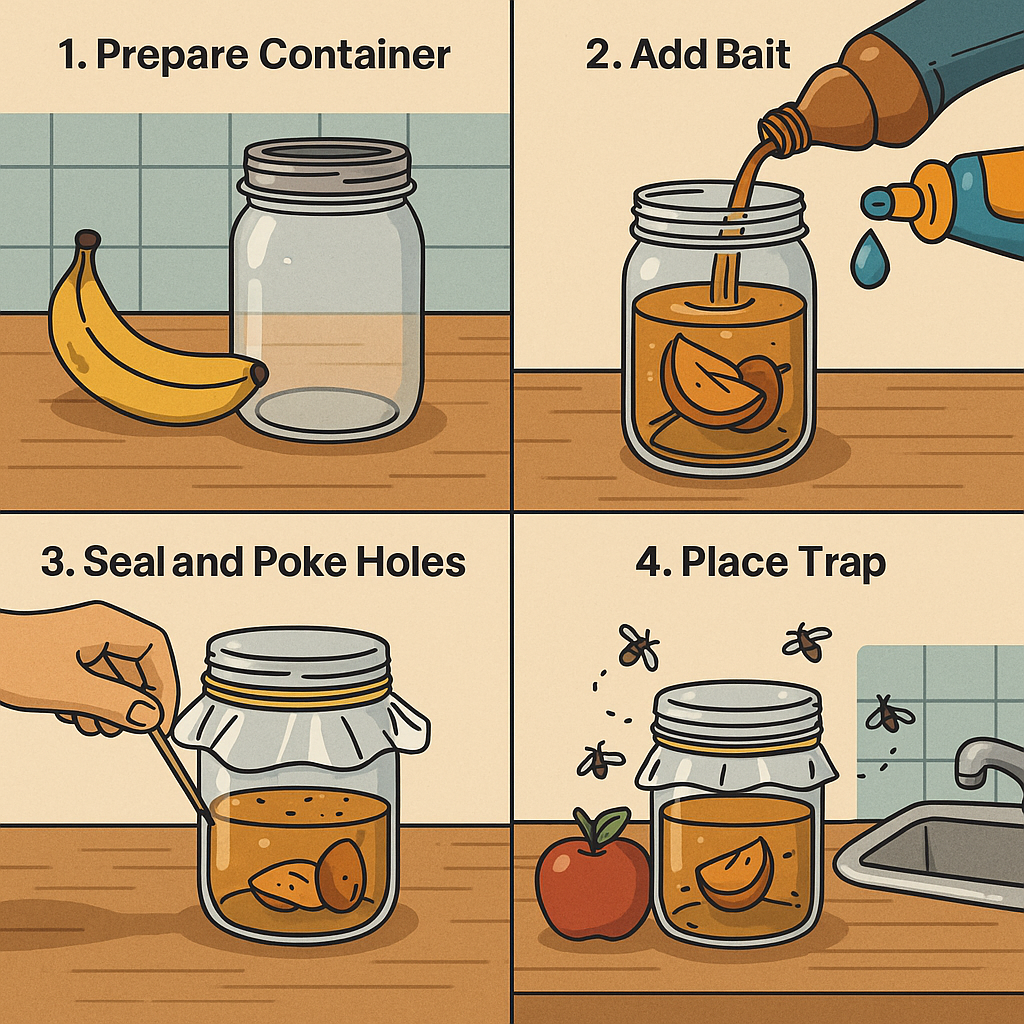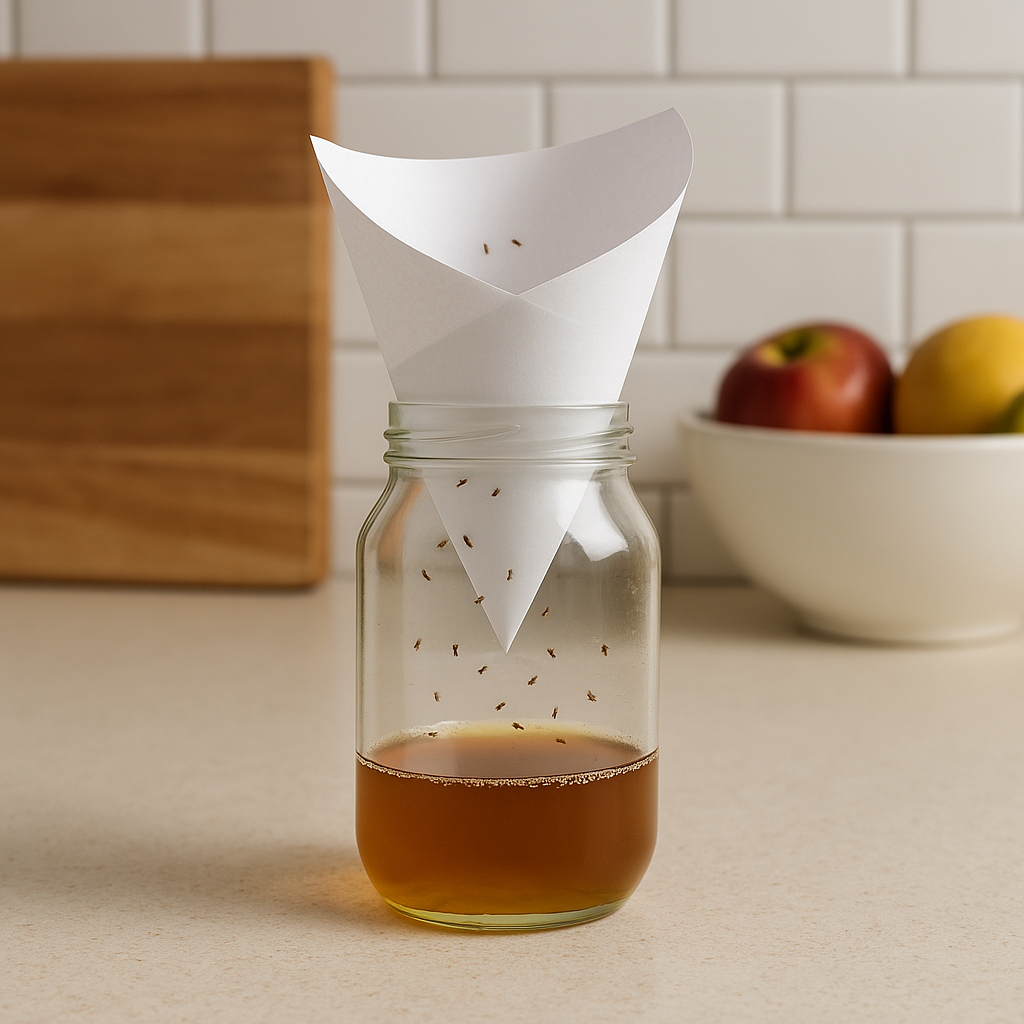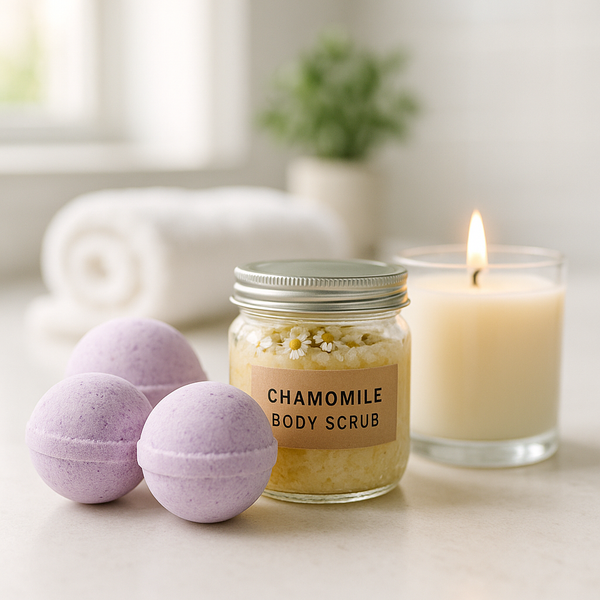Fruit Fly Trap DIY: How to Banish Pesky Flies Naturally
Learn how to make a DIY fruit fly trap with vinegar and soap. Simple, natural, and non-toxic—banish pesky flies from your kitchen in just a few hours.

Fruit flies can take over a kitchen in days, but you don’t need chemicals or pricey sprays to get rid of them. With a few simple household items—a jar, some apple cider vinegar, a drop of dish soap, and plastic wrap—you can build an effective trap that lures and captures these pests. This guide walks you through the process step by step, from choosing the right container to preparing the bait and placing traps strategically. You’ll also learn smart prevention tips to keep fruit flies from returning, helping you maintain a cleaner, fresher kitchen all year round.
How to Make a Simple & Effective DIY Fruit Fly Trap | Get Rid of Fruit Flies Fast!
"Enjoy this curated video. All rights and credit go to the original YouTube creator."
Few things are more irritating than a cloud of fruit flies hovering over your fruit bowl. One day the bananas look fine, and the next morning the kitchen feels like a scene from a nature documentary. These tiny invaders multiply fast, and store-bought sprays don’t always solve the problem. The good news? You don’t need harsh chemicals—or much money—to get rid of them.
With a few everyday items, you can build a DIY fruit fly trap that’s safe, effective, and surprisingly satisfying. Not only does it eliminate the nuisance, but it also teaches you just how resourceful a DIYer can be.

Why Fruit Flies Invade
Fruit flies are drawn to fermenting sugars. They love ripe bananas, apple cores, wine glasses left on the counter, and even damp sponges. Once inside, they breed quickly: a single female can lay hundreds of eggs, which hatch in about 24 hours.
That’s why dealing with them early—before they multiply—is critical. Luckily, fruit fly traps exploit the same attraction that brings them in: sugar, vinegar, and fermentation.
Step 1: Choose Your Trap Container
Start with something small and easy to handle:
- A mason jar
- An old yogurt cup
- Even a clean soda bottle cut in half
Transparent containers work best, since you’ll see results quickly.
Step 2: Prepare the Bait
Fruit flies can’t resist a strong, sweet-sour scent. The best baits are:
- Apple cider vinegar (most effective)
- Overripe fruit (banana peel, apple slice)
- A splash of red wine or beer (fermentation scent attracts them fast)
💡 Pro Tip: Add a drop of dish soap. This breaks the surface tension so flies sink and can’t escape.
Step 3: Seal the Trap
Cover the container with plastic wrap or paper, then poke a few small holes. The flies will crawl in but won’t easily find their way back out.
Alternative: Use the inverted funnel method. Place the cut top of a bottle upside down into the base, creating a natural funnel entrance.
Step 4: Place the Trap Strategically
Set traps where fruit flies congregate:
- Near fruit bowls
- Around the sink
- Next to the trash can
- Near houseplants with damp soil
Keep them out for at least 24 hours and check daily.
Step 5: Empty and Refresh
Once the trap has caught several flies, dispose of the contents:
- Pour the mixture down the sink (run hot water to flush).
- Rinse the container thoroughly.
- Refill with fresh bait as needed.
Most infestations disappear in 2–3 days with consistent use.
Preventing Future Infestations
Eliminating flies is one thing; keeping them away is another. Prevention steps include:
- Store fruit in the refrigerator when ripe.
- Take out compost/garbage daily.
- Wipe counters and spills promptly.
- Rinse recyclables before binning.
Consistency is key. A clean kitchen makes it hard for fruit flies to make a comeback.

Materials Needed
- Small container (mason jar, yogurt cup, or plastic bottle)
- Apple cider vinegar (or red wine/beer)
- Overripe fruit peel (banana, apple, etc.)
- Dish soap (1–2 drops)
- Plastic wrap or paper cover
- Rubber band or tape to secure cover
- Toothpick or fork (to poke holes)
- Optional: kitchen funnel for inverted method
These supplies are everyday items you probably already have at home. With just a jar, some vinegar, and a bit of plastic wrap, you can turn a kitchen nuisance into a quick DIY victory. No expensive sprays, no chemicals—just smart, simple problem-solving.
Final Takeaway
Fruit flies may be tiny, but they don’t stand a chance against a good DIY trap. With simple household items and a bit of patience, you can reclaim your kitchen in just a few days. Next time they appear, don’t waste money on harsh products—just set a trap, sit back, and enjoy the satisfaction of outsmarting nature.









